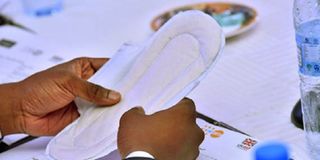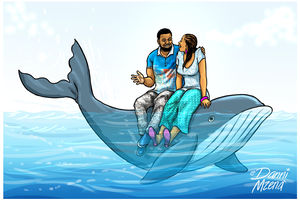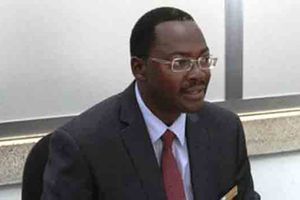Youth making pads out of sugarcane

Briefly introduce yourself.
My name is Lydia Asiimwe. I am a co-founder of EcoSmart Uganda Limited. We are the producers and suppliers of low-cost sanitary pads made out of recycled sugarcane fibre.
What is the origin of EcoSmart Pads?
It all started when Susan Mbabazi, a member of our team met, a 16-year-old girl called Kyomuhendo, who had travelled a long way from her village in Rwanyamahembe, in Mbarara District of Western Uganda in search of better health care at Mbarara Regional referral Hospital.
Kyomuhendo had developed wounds in her vagina that had first presented with itching soon after her menstruation period. She had been using three pieces of the same old cloth over the past two years during her period.
To Mbabazi, this form of menstrual management was part of the reason for Kyomuhendo’s pain and she was determined to do something about it.
A week later, Suzan Mbabazi was selected to participate in the CAMTech Uganda internship programme and she got her chance to tell this story. Two other students on the programme and a member of staff were inspired and they joined us to form a team.
The team grew to be known as the EcoSmart Pads team and we have figured out a way to upcycle (re-use waste) sugarcane fibre into a material that we are now using to make low cost and eco-friendly sanitary pads. Our vision is to ensure equality, vibrancy and dignity in menstrual management among girls and women in Uganda.
How did you come up with the idea?
During the CAMTech Uganda internship programme, we were challenged to come up with innovative ideas to solve this health challenge.
Based on our inspirational encounter with Kyomuhendo, we started thinking through possible natural or plant materials we could use to develop a sanitary pad that would be cost effective in the long run.
We had three options; maize stem fibre, soghum stem fibre and sugarcane fibre. Our lab test results showed that sugarcane fibre had the highest absorbence rate, equal to cotton.
Who is part of the team, and what role do they play?
Team members include; Noel Aryanyijuka, a biomedical engineer; Suzan Mbabazi, a computer engineer and the sales and marketing manager; Sam Kazibwe, an IT specialist and the research and development manager; Shakira Namatovu, a specialist on gender and the Health Networking Manager as well as Lydia Asiimwe, the administration and Human Resource Manager.
What is the eco component of the solution?
First is the fact that we are upcycling fibre that would otherwise be disposed off. Secondly, sugarcane is a plant material that easily decomposes to make manure that increases soil fertility.
What is your source of sugarcane waste?
Currently, we get material from Kinyara but we have not yet entered into a formal agreement with them.
What materials are used in making this pad?
100 per cent of the absorbent layers are sugarcane fibre, we have a thin cotton cover and a baby fluid holder dressing it up.
What is your anticipated production capacity? Where will you produce it from?
We hope to produce 92,463 packs of 12 pieces per month (if we get the resources). Our target is to be able to supply at least 833 packs to each of the 111 districts in Uganda per month which will yield to 10,000 packs per district in a year.
How are you planning to get these pads to the intended users or audiences?
We are generating a registry of all units that support vulnerable groups of people and are also working through the already established local government units. Through these channels, we will have our product reach its end users.
How much will the pads cost and how did you arrive at the price?
A 12-piece pack will cost Shs1500. This will come as a result of a heavy subsidy from philanthropists and venture capitalists who are interested in impact rather than profit. The unit price was arrived at when 90 per cent of the end users we interacted with during our needs assessment confirmed that they could afford to pay Shs1,500.
About Upcycling
Upcycling, also known as creative reuse, is the process of transforming by-products, waste materials, useless, or unwanted products into new materials or products of better quality or for better environmental value. Upcycling is the opposite of downcycling, which is the other half of the recycling process.
Email: [email protected]




